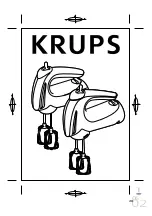
as in Active Relays. The operation is as in Active Relays, the outputs being in the
present case terminals 1 and 2 which connect to the corresponding terminals of two
Amplifiers N.
12.27 Amplifier Type D
12.27.1
Purpose
This is used as the input amplifier in the Microphone Cassette. In
conjunction with a control to Drawing No. A191 it provides a gain of 25
±
5dB, the
control having 20 steps of 0.5dB.
12.27.2
Circuit
The circuit diagram is shown in Drawing No. BE232.
12.27.3
Circuit Description
The circuit is very similar to that of Amplifier A3 (see 12.3). The forward path
is identical but only a direct coupled output is provided. Provision for the gain
control is made by blocking capacitor C6 and resistor R8 connected between the
emitter of VT1 and the Gain Control Terminal. The actual control, which at
maximum gain has a value of 0
Ω
and at minimum gain has a value of 1.2k
Ω
, is
connected between this terminal and 0V. AOT1 is selected to set the gain to 20dB
with 1.2k
Ω
connected between “Gain Control” and 0V.
12.27.4
Output
The output has no d.c. blocking capacitor. It is in phase with the input and will
deliver at least 1.4V r.m.s. into a load of 3k
Ω
.
12.28 Amplifier Type P
12.28.1
Purpose
In that it provides in phase and out of phase outputs for use with a poling
button and that it’s outputs are suitable for connection to a loudspeaker selector
switch, this amplifier is basically the same as an Amplifier H (see 12.10). Amplifier
P is however required to work in conjunction with the Solo Relay (see 12.24) which
requires some differences.
12.28.2
Circuit
The circuit diagram is shown on Drawing No. BE233.
12.28.3
Circuit Description
For the working of the Solo Relay, the normal output must be the second
output and hence two phase reversing amplifiers are required. These, apart from
the values of the gain determining components, are both very similar to the phase
reversing pair in Amplifier H. Being of the virtual earth type, it is not possible directly




































